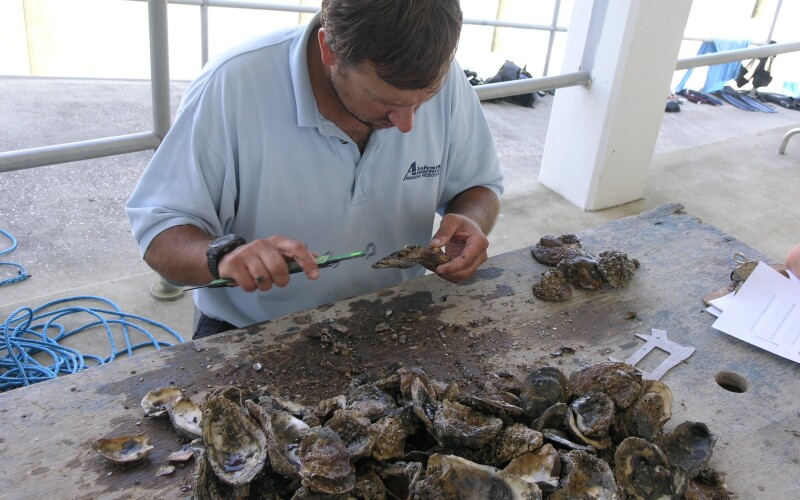Keeping the Alabama oyster fishery alive and rebounding is the name of the game for Craig Newton and Jason Herrmann, biologists with the state’s Marine Resource Division (MRD). According to Newton, the 2023 season has started off well.
“We opened the east side of Cedar Point on Oct. 2,” says Newton. “And it was a little slow. We were seeing about 100 sacks a day, but since we opened the west side, we’re averaging 400 sacks a day.”
According to Newton, on a good day as many as 100 harvesters will head out into the waters of the Mississippi Sound and tong for two or three hours to fill six, 80-pound sacks – the individual limit. “The oysters are looking good,” says Newton. “The problem we’re seeing is minimal spat.”
Newton notes that spat set is affected primarily by two environmental conditions, the amount of fresh water entering the bay, and the level of dissolved oxygen. “We’ve had a pretty dry summer and fall, but we had a couple of pulses of fresh water coming in, and those coincided with spawning,” he says. “So that might be the problem.”
According to Newton’s colleague at MRD, biologist Jason Herrmann, the settlement numbers are way off. “We sample by scuba divers down to sample one-square-meter quatrats along a transect on a reef,” says Herrmann. “They scrape everything in each quatrat into a bag and then we check what’s in the bag. In a good sample we might find 20-30 legal oysters, over 3 inches; 50 to 200 sub-legals, 2-3 inches, and 500 to 1000 spat. But we’re not seeing that pyramid, it's more like a stick. We’re seeing 20 to 30 sub-legals, and 20 to 30 spat.” Like Newton, Herrmann attributes the decline in spat to rains that came at just the wrong time.
The end of the season has yet to be determined, but with the dearth of spat Netwon notes that the MRD will be inclined to be more conservative. “As soon as we see them getting only two or three legal oysters in the tongs, and the rest culls and smalls, we’ll have to shut it down,” he says.
“Last year we had a 61-day season and around 44 thousand sacks,” Newton says. “The year before that we had 79 days and 50 thousand sacks. So far this year we’re at 8,000 after 20 days fishing.”
While the statistics for the last three years appear to be trending downwards, overall, Alabama’s fishery has rebounded from a deep slump that started 15 years ago, and harvesters hope to see the general improvement continue.







